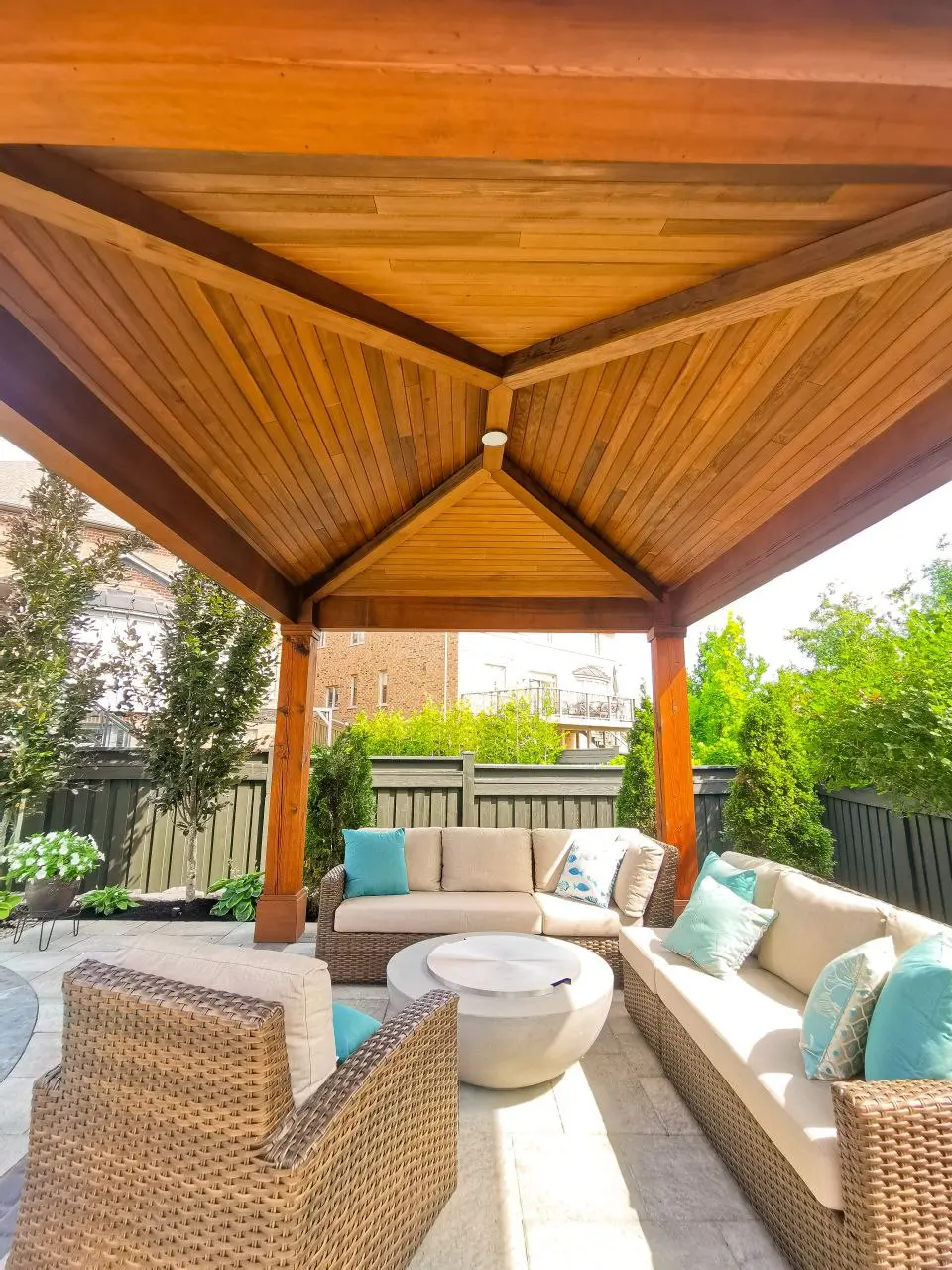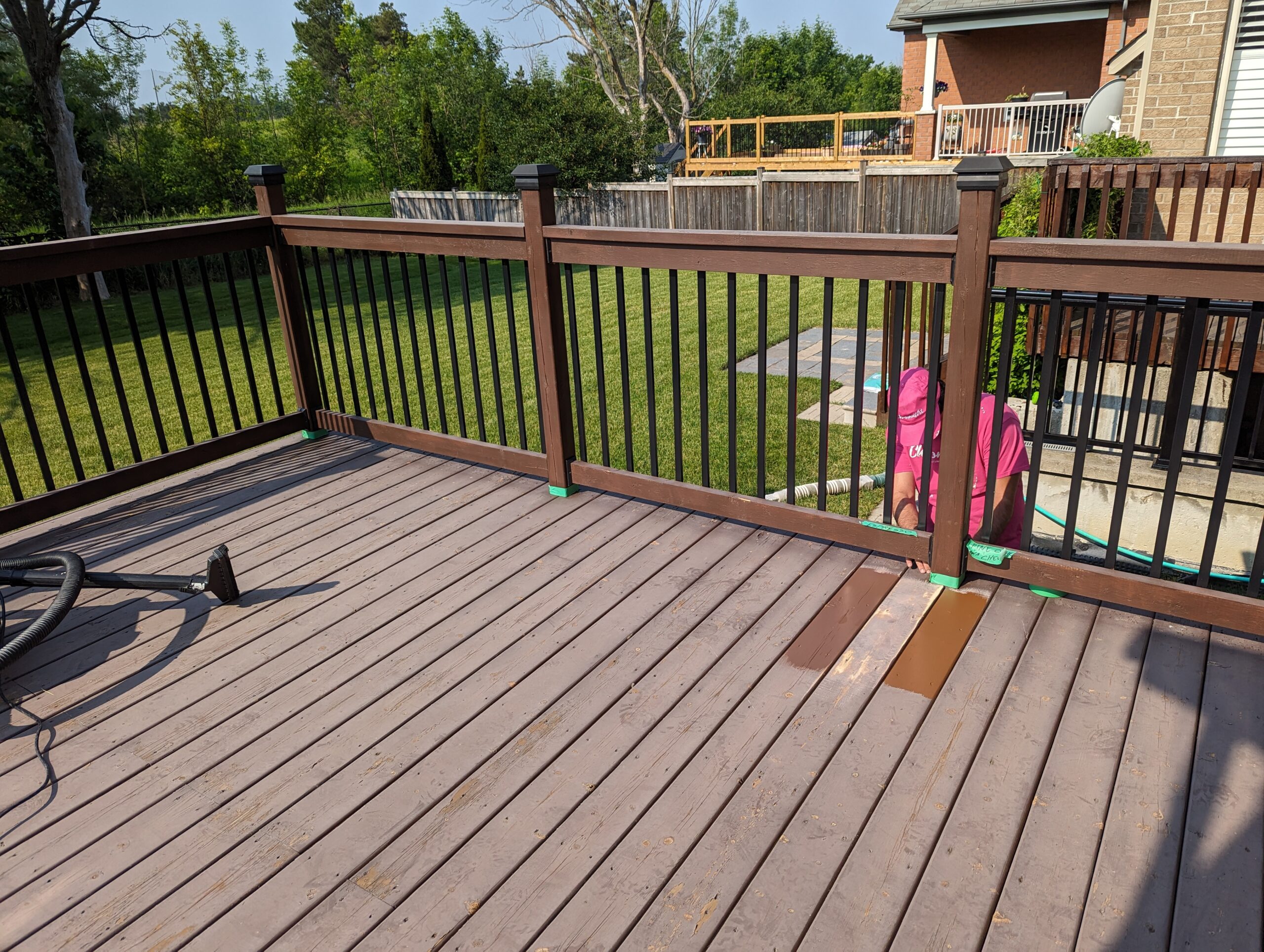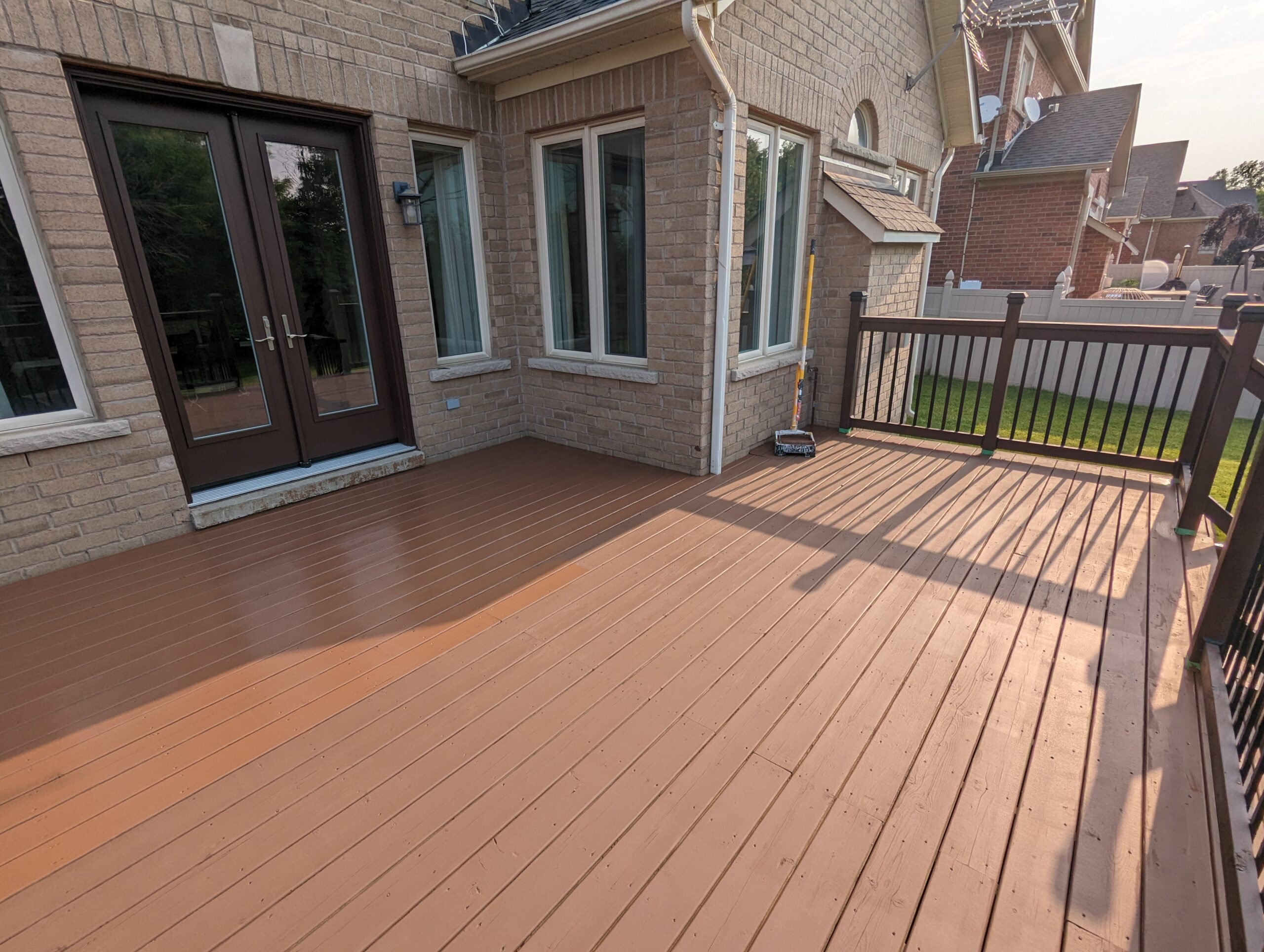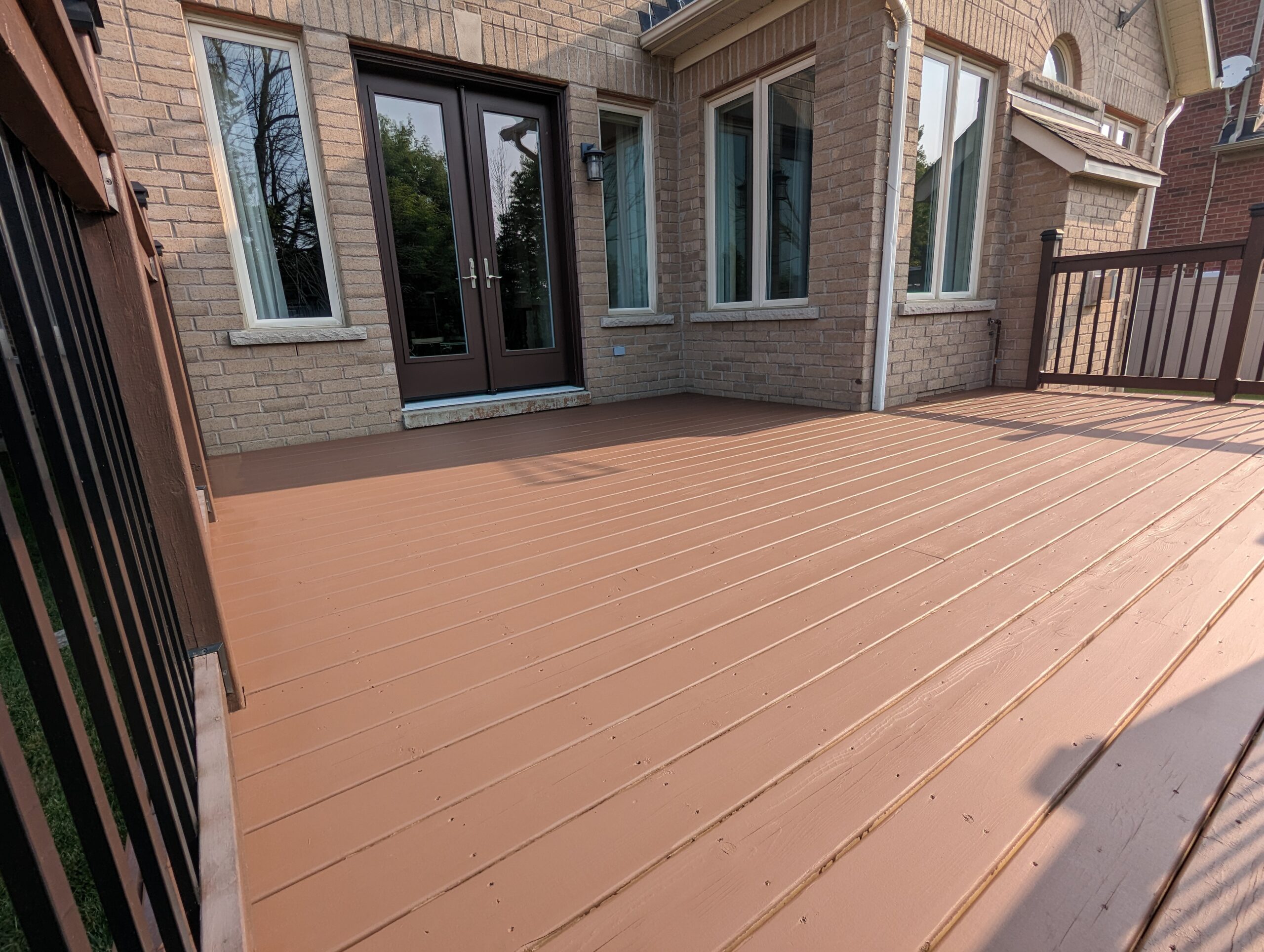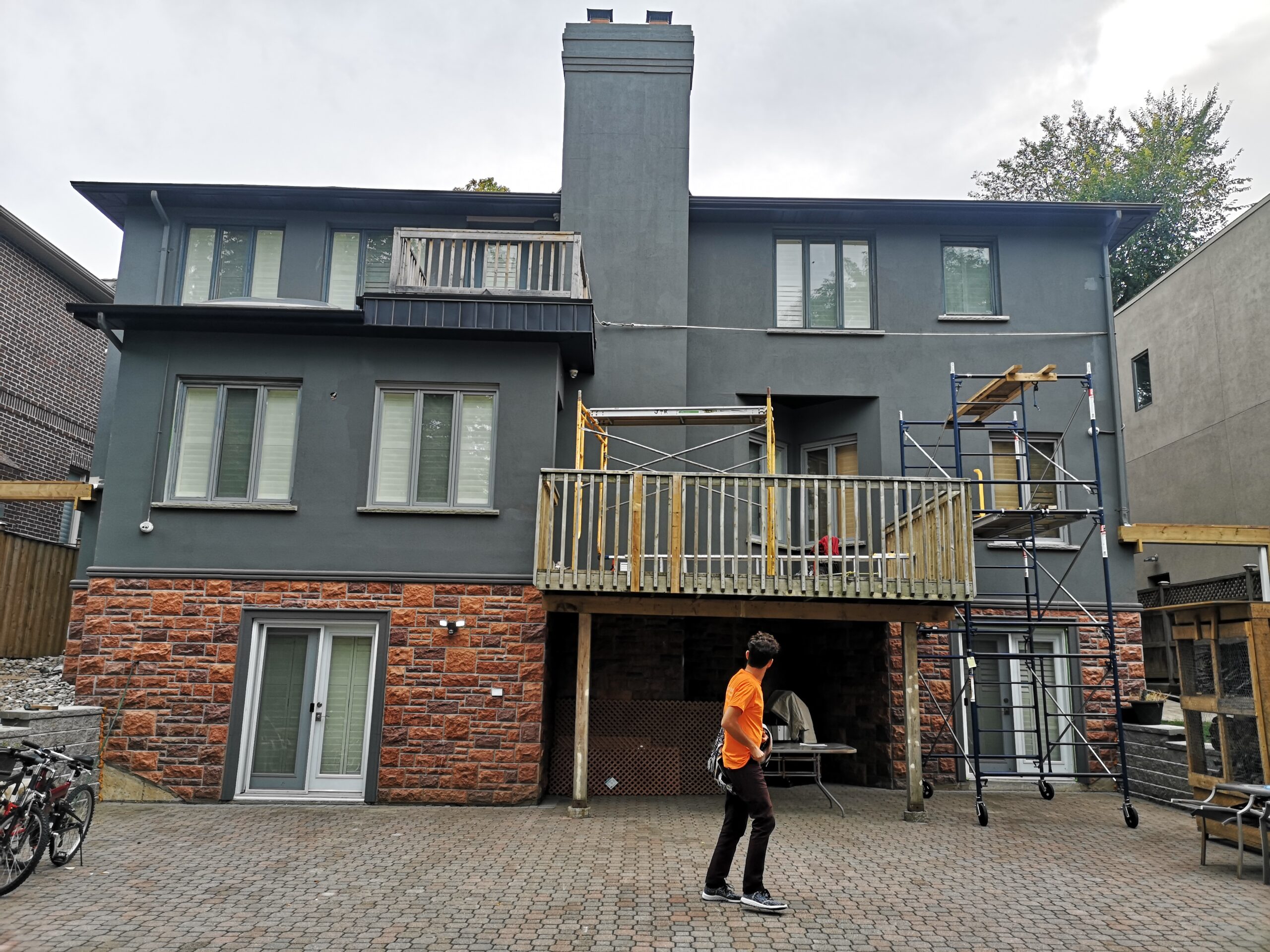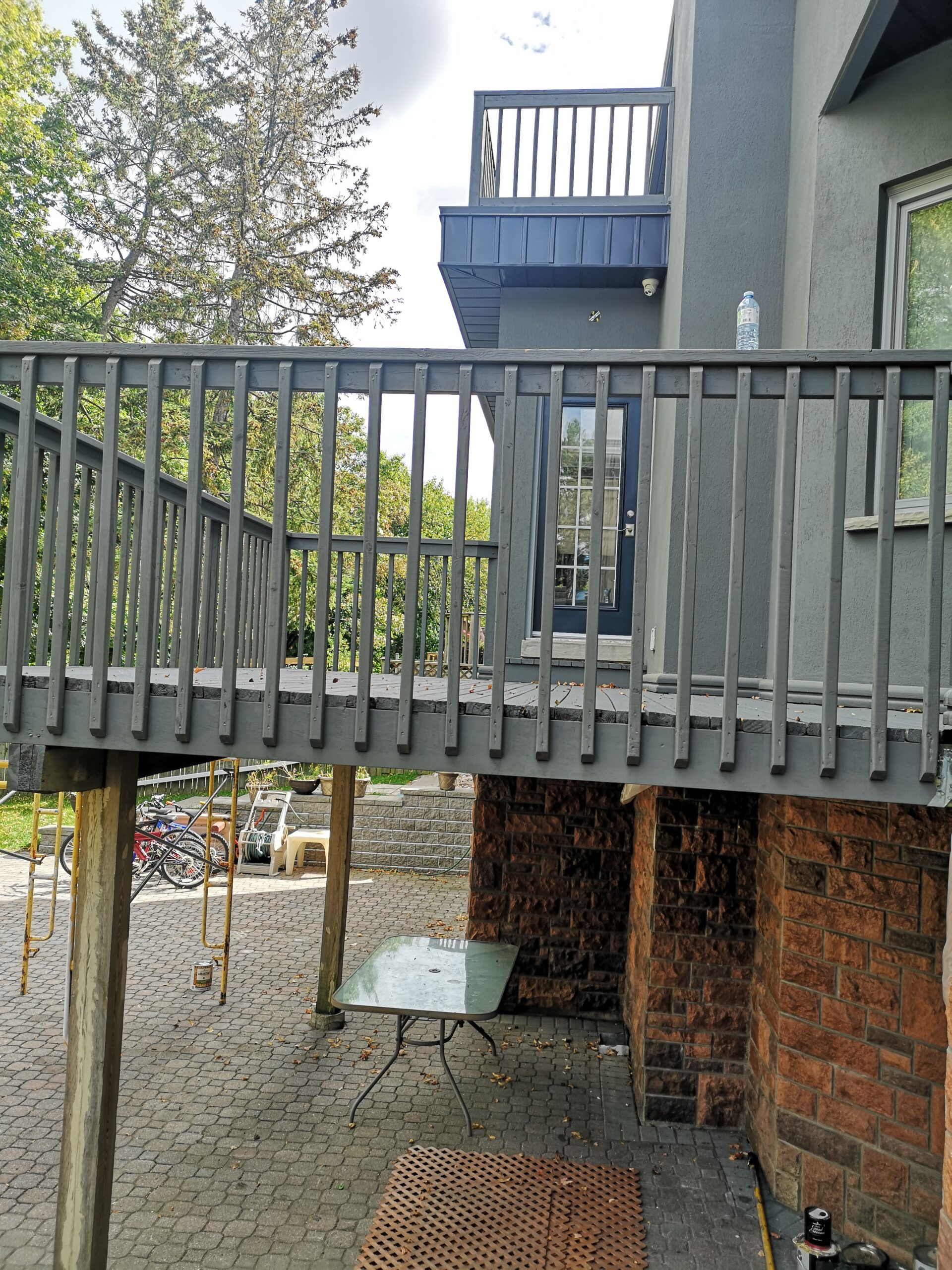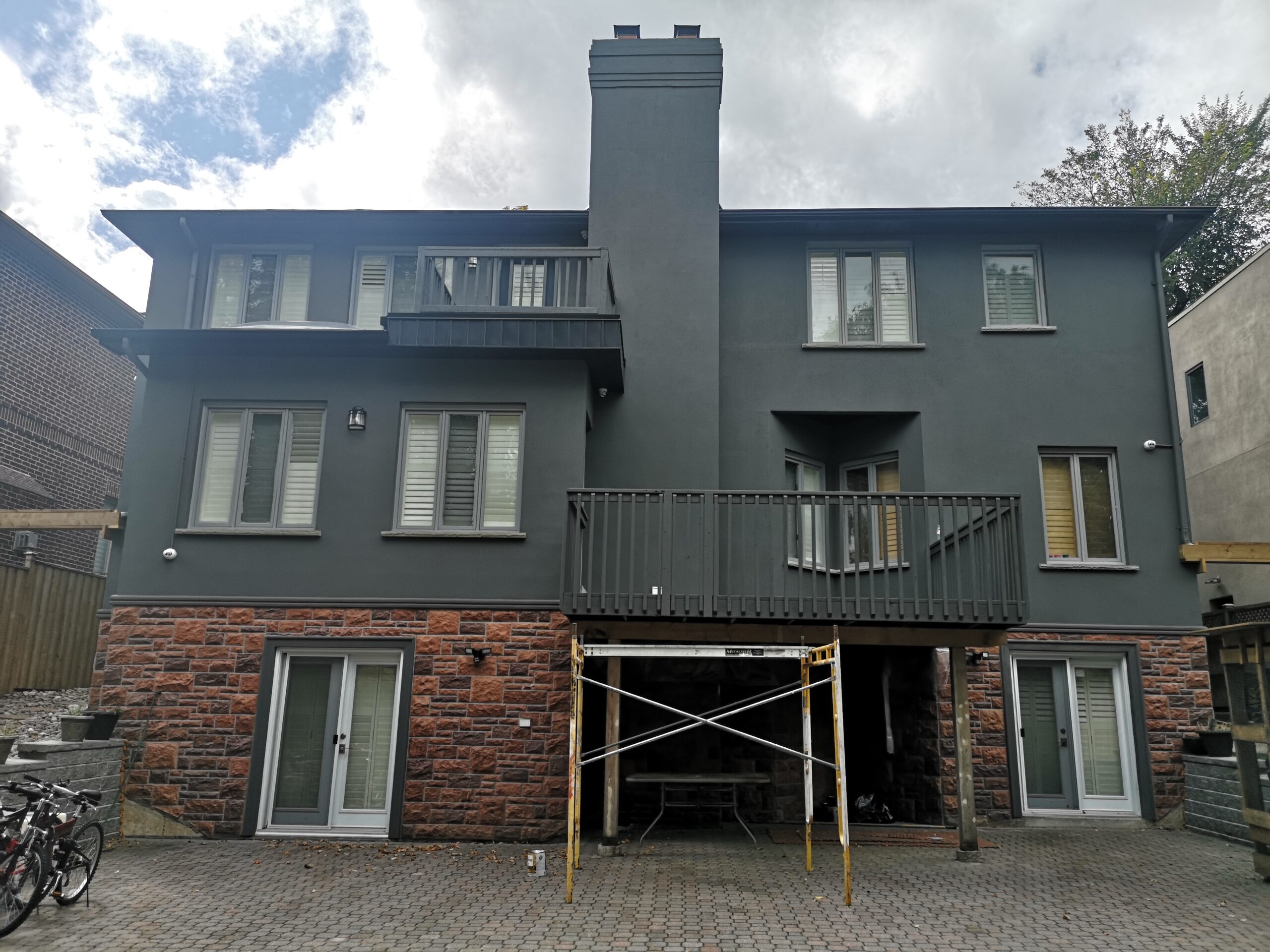Comprehensive Guide to Deck Maintenance: Deck Painting vs. Deck Staining
Spring is the best time to perform maintenance on your deck. As we transition into mild temperatures and longer days, maintaining your deck is essential to ensure its longevity, safety, and aesthetic appeal. Here’s a detailed guide to help you keep your deck in top condition.
Cleaning the Deck
Removing debris like leaves, dirt, and twigs that can trap moisture and lead to rot. For a deeper clean, we use a pressure washer.
Preparing the Deck for Painting or Staining
All loose and peeling paint must be removed before repainting a deck. We use a wirebrush and light sweeping strokes to dislodge loose paint. Rough surfaces then get sanded using Festool dustless sander maintaining a clean and dustfree canvas.
Applying Deck Paint or Deck Stain
Either you opt for deck paint or deck stain, we begin by applying the product to the clean, dry, and prepared surface of the bare wood. For painting, we use a roller to cover large areas swiftly and a brush to reach tight spots and edges. Apply the paint evenly, following the wood grain to ensure smooth coverage. For staining, we use a stain pad or brush, applying the stain in the direction of the wood grain. Allowing the stain to penetrate the wood, and wipe off any excess to prevent blotches.
At Chromatist Painters, we offer color consultations to help you choose between paint colors or the different types of stains, whether transparent, semi-transparent, or solid, to ensure your deck looks exactly how you envision it.
Deck Painting vs. Deck Staining
Deck Painting
Advantages:
Durability: Paint forms a thick, protective layer on the surface.
Uniform Look: Hides imperfections and gives a consistent appearance.
Color Options: Wide range of colors available.
Disadvantages:
Maintenance: More prone to peeling and blistering, especially in humid environments.
Preparation: Requires thorough surface prep to ensure proper adhesion.
Deck Staining
Advantages:
Penetrates Wood: Soaks into the wood grain, providing protection from within.
Natural Look: Allows the wood grain to show through, enhancing natural beauty.
Maintenance: Less prone to peeling and blistering compared to paint.
Disadvantages:
Frequent Reapplication: Needs to be reapplied more often than paint.
Limited Coverage: Doesn’t hide imperfections as well as paint.
Natural Alternative to Deck Painting and Staining
As a natural alternative to deck painting and staining, consider wood protection. As an example CUTEK® Extreme offers powerful protection while enhancing the natural beauty of wood. It diffuses deeply into wood to repel moisture, maintain structural integrity, and ensure the longest possible service life. Once diffused, CUTEK® Extreme remains permanently mobile in the wood, actively driving out moisture to minimize cupping, warping, and splitting, even after being cut or perforated with fasteners.
Final Thoughts
Choosing between paint and stain largely depends on your deck’s condition and your personal preferences. Paint is ideal for older decks with imperfections and for creating a uniform look, while stain is better for showcasing the natural beauty of wood and in moisture-prone areas. Proper preparation is crucial for both methods to ensure a long-lasting finish. With the right care and maintenance, your deck will remain a beautiful and functional outdoor space for years to come.
